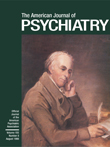One of the most inviting aspects of this book was evident as soon as I received it—its small size. Evaluation and Management of Sleep Disorders is part of a series of Concise Guides edited by Dr. Robert Hales and published by the American Psychiatric Press. As Dr. Hales explains in his foreword to this volume, the guides are pocket-sized so that they may be readily available for use in a clinical setting. The ability to fit easily in a coat pocket made it easy for me to read the book during snatches of after-hours waiting time. Yet the guide doesn't read like a condensed version of the field. It is filled with clear explanations of the assessment of sleep disorders and offers detailed information. Goals of the book are to provide a portable and practical approach to the diagnosis and treatment of sleep problems and a current summary of the classification of sleep disorders. The book itself takes a symptom approach, dividing the disorders into 1) “I can't sleep" (insomnia), 2) “I sleep too much" (excessive daytime sleepiness), and 3) “strange things happen when I sleep" (parasomnias).
The initial chapter is an overview of sleep disorders. A 1995 Gallup Poll commissioned by the National Sleep Foundation (
1) revealed that 40% of adults in the United States have occasional or chronic insomnia. There is a great cost to the economy in terms of decreased efficiency and personal stress due to sleep loss. The first chapter also reviews the various classification systems, including DSM-IV and the International Classification of Sleep Disorders of the American Sleep Disorders association. In order to begin classifying a sleep complaint, three questions are proposed as a good initial screen. First, the question, “Are you satisfied with your sleep?” will pick up most insomnias. Then asking, “Are you excessively sleepy during the day?” will reveal most excessive sleep disorders. Finally, parasomnias can be uncovered by asking, “Does your bed partner complain about your sleep?” These unusual events occurring during sleep are more often reported by observers of the patient's sleep—the bed partner, roommate, or parent. As with much of medicine, a good history will make most diagnoses, aided by sleep laboratory tests, such as polysomnography and the Multiple Sleep Latency Test. The second chapter reviews the physiology and pathology of sleep stages, circadian rhythms, and dreams.
Chapter 3 examines causes of insomnia. This is a disorder that most people experience at some time in their lives because excitement, stress, anticipation, and travel to higher altitudes can precipitate transient insomnia. Chronic insomnia can arise from psychiatric conditions, drug side effects, disorders of circadian rhythms, and periodic limb movements of sleep. The next chapter discusses the evaluation and treatment of excessive daytime sleepiness. Narcolepsy and sleep-related breathing disorders are prominent causes of this complaint.
The fifth chapter discusses parasomnias, which include four general categories: REM sleep behavior disorders and nightmares, disorders of arousal from sleep, sleep-wake transition disorders, and other miscellaneous disorders. REM sleep disorders consist of a number of disorders, including paralysis and hallucinations at the onset or end of sleep and sleep-related painful and impaired erections. Sleepwalking and sleep terrors are some of the disorders of arousal from sleep. Sleep starts and sleeptalking happen during sleep-wake transitions. Miscellaneous disorders include such problems as sleep-related eating disorder, sleep bruxism, and sudden, unexplained nocturnal death syndrome.
Chapter 6 discusses sleep disorders related to symptoms associated with medical illnesses or psychiatric conditions. Medical disorders may significantly disrupt sleep. Medication treatment for medical conditions can also disturb sleep, as can hospital stays. Psychiatric illness, of course, can be associated with insomnia or excessive daytime sleepiness. Chapter 7 examines medications with sedative-hypnotic properties for use in transient or chronic insomnia. The final chapter examines sleep problems in special populations, including at different ages and during pregnancy and menopause. Especially helpful in this chapter is an outline of treatment of enuresis and how to sort out sleep complaints in the elderly.
The authors of this guide, Dr. Martin Reite, Director of the University of Colorado Sleep Disorders Center, and Dr. John Ruddy and Dr. Kim Nagel, its associate directors, have produced a well-organized, succinct overview of the clinical approach to sleep disorders. The clinician using this volume can easily locate the relevant chapter by chief complaint and then find, within the chapter, DSM-IV diagnostic criteria to translate into current psychiatric diagnostic categories. During my review, I found tidbits in two or three areas that were immediately applicable to my clinical practice. All too often we concentrate on the patient's reports of daytime symptoms and neglect the other third of a patient's life. This book offers clinical practitioners a way to expand their understanding of how sleep interacts with daytime functioning and how to approach sleep concerns.

